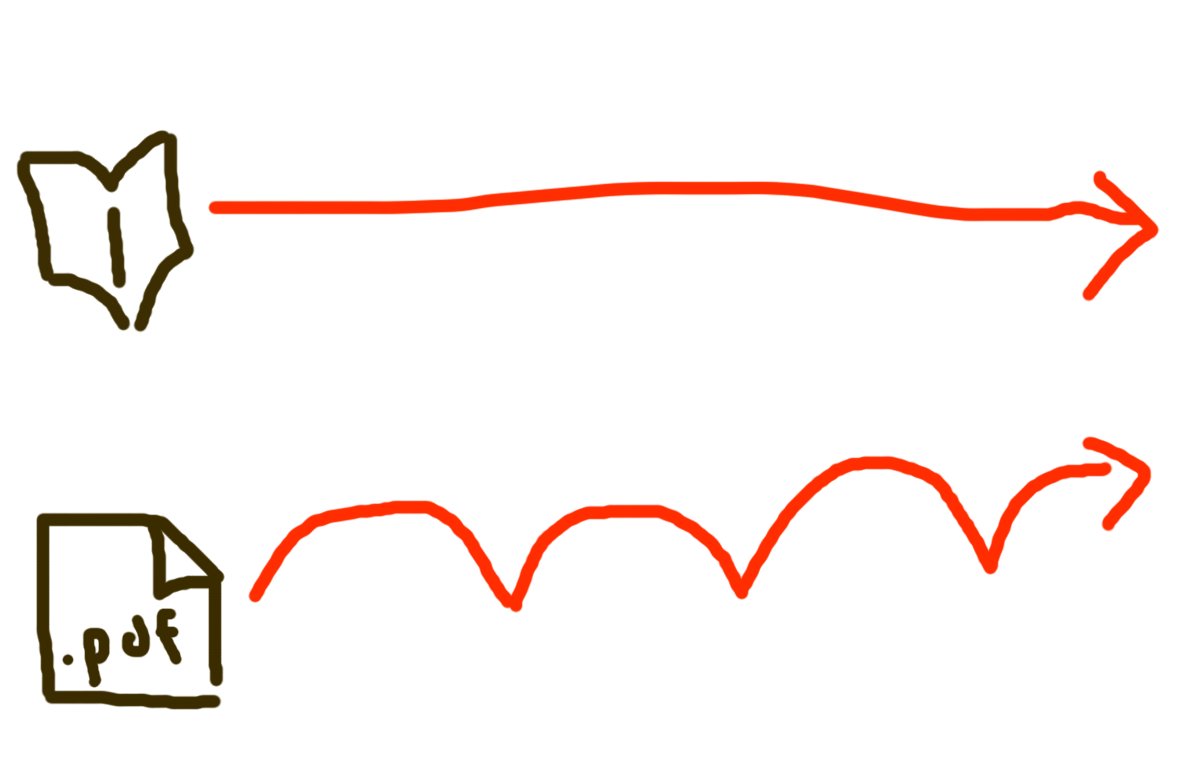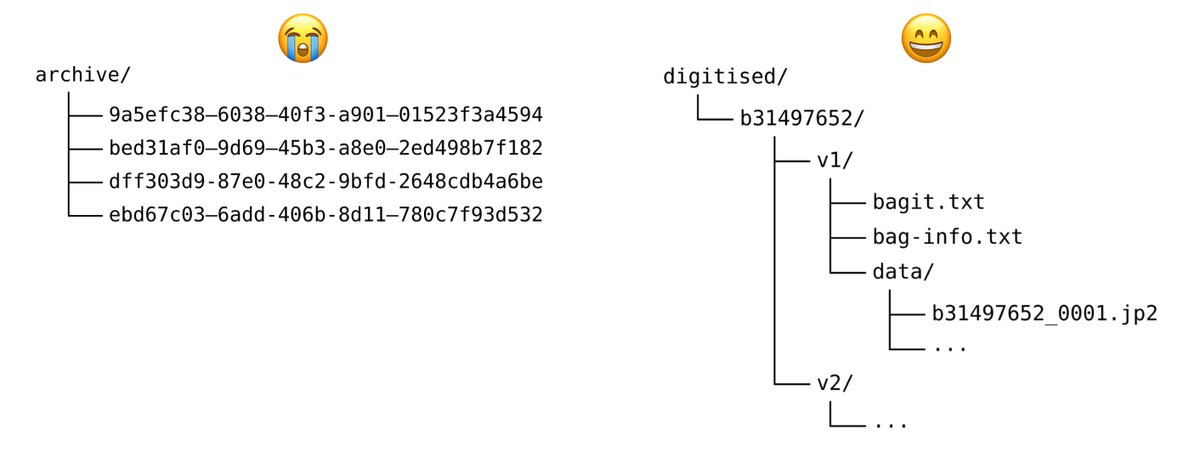It’s not explicit in my posts, but here’s one of my core feelings about #digipres:
Good digital preservation is about giving yourself future flexibility.
We should store digital collections in a way that allows us to quickly and easily shift formats as trends change. #WDPD2020
Good digital preservation is about giving yourself future flexibility.
We should store digital collections in a way that allows us to quickly and easily shift formats as trends change. #WDPD2020
It’s impossible to predict what formats will be popular in future.
(And even if a time traveller came back and told you that, say, JPEG3000 will eventually replace JPEG2000, that information is useless until JPEG3000 actually exists – and will in turn eventually be obsoleted.)
(And even if a time traveller came back and told you that, say, JPEG3000 will eventually replace JPEG2000, that information is useless until JPEG3000 actually exists – and will in turn eventually be obsoleted.)
So instead, we should build systems that allow us to bulk, non-destructive reprocessing of files.
When JPEG2000 goes away, we need to be able to convert all our existing images into the new popular format. When that goes, we need to be able to do the same again. And so on.
When JPEG2000 goes away, we need to be able to convert all our existing images into the new popular format. When that goes, we need to be able to do the same again. And so on.
Physical objects can last unmodified for generations (although anything A/V related is a little dicey). Books can be hundreds of years old and still be readable.
Digital files have to “hop” into the future, one format at a time – so we need to be ready for this when it happens.
Digital files have to “hop” into the future, one format at a time – so we need to be ready for this when it happens.
This also applies to preservation software – our digital collections will outlast any given tool, so we need to store our data in a way that remains useful after all our tools are replaced.
When we built Wellcome’s new storage service, we drastically cleaned up our file layout.
When we built Wellcome’s new storage service, we drastically cleaned up our file layout.
Those folders also highlight an aspect of Wellcome’s storage that I’m quite proud of – versioning!
We can efficiently store multiple versions of the same collection – so new formats can be added as new versions, and we keep old formats in older versions. https://stacks.wellcomecollection.org/how-we-store-multiple-versions-of-bagit-bags-e68499815184
We can efficiently store multiple versions of the same collection – so new formats can be added as new versions, and we keep old formats in older versions. https://stacks.wellcomecollection.org/how-we-store-multiple-versions-of-bagit-bags-e68499815184
And this change isn’t just churn and work – new technology can bring exciting new opportunities for digital collections!
e.g. cloud services give us access to cost-effective, industry standard A/V processing tools. This is a game changer for A/V digitisation workflows.
e.g. cloud services give us access to cost-effective, industry standard A/V processing tools. This is a game changer for A/V digitisation workflows.

(I’m hoping my colleagues who actually work on our A/V digitisation will write a more detailed blog post about this soon.)
(The rise of cloud computing in digital preservation could be another topic as well.
I know some people are sceptical, but I see it as enabling processes and services that were simply inaccessible/unaffordable to cultural heritage institutions even five years ago.)
I know some people are sceptical, but I see it as enabling processes and services that were simply inaccessible/unaffordable to cultural heritage institutions even five years ago.)
tl;dr: The only constant in digital collections are the collections themselves. Everything else is a trend – file formats, software, preservation standards.
When we design our digital preservation tools, we should include the flexibility to change as the world changes around us.
When we design our digital preservation tools, we should include the flexibility to change as the world changes around us.

 Read on Twitter
Read on Twitter



